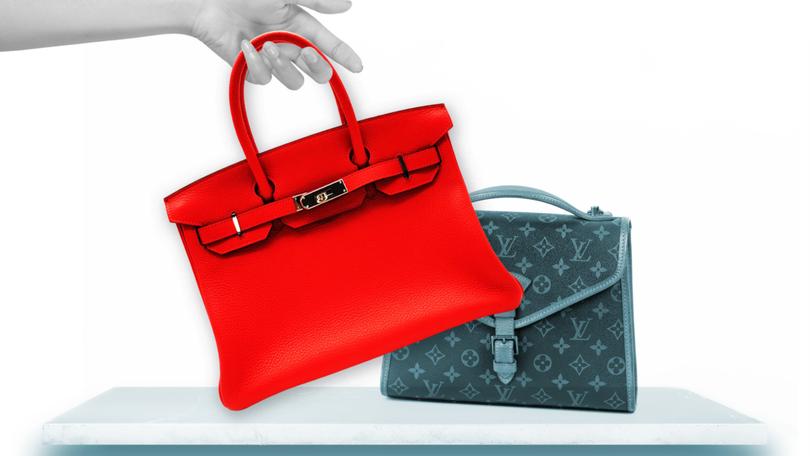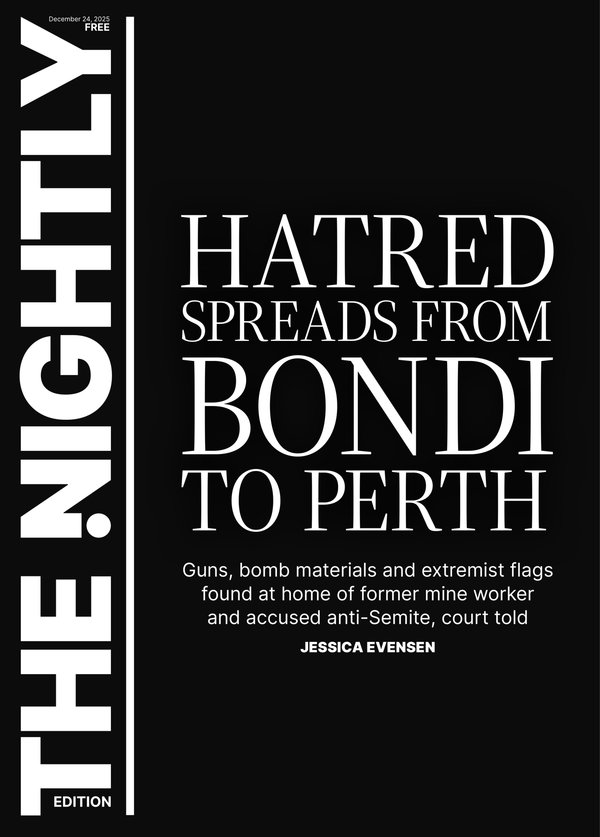THE ECONOMIST: Why Louis Vuitton is struggling but Hermes is not

There will be fewer designer handbags or high heels under the Christmas tree this year.
Spending on personal luxury goods is set to fall by 2 per cent in 2024, according to Bain, a consultancy.
Sales of fashion and leather items at LVMH, the world’s biggest luxury conglomerate, have tumbled. Kering, which owns Gucci, has issued a string of profit warnings.
Sign up to The Nightly's newsletters.
Get the first look at the digital newspaper, curated daily stories and breaking headlines delivered to your inbox.
By continuing you agree to our Terms and Privacy Policy.Anyone that receives Versace goodies from Santa may feel a little less pleased than usual. The luxury brand is selling 40 per cent of its products at a discount.
These travails follow an extraordinary rise for the luxury industry. For two decades it expanded smartly as brands reached new customers.
In 2023 global sales of personal luxury goods hit $US400 billion ($600b), up from a little over $US100b in 2000, according to Bain. The combined market capitalisation of the ten most valuable Western luxury firms approached $US1 trillion, compared with around $US300b in 2013.
Over the past 12 months, however, their value has fallen by more than a tenth and growth has reversed. Can luxury recapture its lost allure?
Two trends fuelled the growth of the luxury business. The first was globalisation. Brands that began life catering to Western elites in places such as London, New York and Paris increasingly turned eastwards for growth — and to China in particular, for good reason.
In 2000 there were 39,000 dollar millionaires in the country, according to UBS, a bank; by 2023 there were 6 million, more than anywhere else other than America, and twice as many as in Britain, the third-biggest home for millionaires.
The Chinese market made up around 15 per cent of global personal-luxury-goods sales in 2023, about five times its share in 2000.
The second trend propelling growth was what industry types call democratisation. To serve the merely affluent, as well as the stinking rich, luxury brands began selling a selection of items at less lofty prices. Gucci, for example, started peddling white socks; these will set you back a mere $US200 (a steal compared with a $US3,600 Gucci handbag).
Brands from Armani to Valentino launched cheaper sub-brands, often focused on more casual attire.
“Until 30 years ago, luxury had no adjectives attached to it,” says Brunello Cucinelli, who runs the luxury brand that carries his name.
The industry now talks of “aspirational” or “accessible” luxury. According to BCG, another consultancy, shoppers who spend €2,000 ($3300) or less a year on luxury goods and services — a trifling sum by industry standards — account for nearly two-thirds of total sales.
Those two engines of growth are now sputtering. Middle-class shoppers in the West have been squeezed by high interest rates and cooling job markets, leaving them with less to splurge on the finer things in life.
Luxury spending in China has been crimped by the combination of a housing crisis and a government campaign against showy displays of wealth. Rather than monogrammed totes, Chinese youngsters now carry their belongings around in plastic bags to flaunt their frugality.
Hefty price increases over the past few years have also irked shoppers. HSBC, another bank, reckons luxury products are 54 per cent more expensive today than in 2019. A mid-sized Dior Lady Bag now costs €5,900, up from €3,200 in 2016.
Andrea Guerra, the boss of Prada, another luxury brand that raised prices in the past few years, describes the increases as “a blatant mistake”.
Some in the industry fret that the days of heady growth may not return. There are, after all, only so many middle-class shoppers willing to spend $US200 on a pair of socks. And no emerging market will add as many affluent consumers in the decade ahead as China did in the decade past.
Yet the pessimism may be overdone. For one thing, China’s luxury slowdown is not as bad as it seems. True, luxury spending within the country will fall by 26 per cent in 2024, estimates Bernstein, a broker. But that is partly because many Chinese shoppers now spend more during trips abroad, particularly to Japan, where the currency has weakened significantly against the yuan.
Bernstein reckons that luxury spending worldwide by Chinese shoppers will be down by only 3 per cent in 2024. “When people ask: What is the next China? I say: It is still China,” notes Laura Burdese, deputy chief executive of Bulgari, a maker of high-end jewellery.
Moreover, not all brands are equally exposed to middle-class shoppers — and, by extension, to the economic cycle. Even as less-wealthy consumers feel the pinch, the ranks of the world’s very rich continue to swell. UBS reckons there will be 86 million millionaires in the world by 2027, up from around 60 million currently.
Forbes, a magazine, counted 2,781 billionaires in its annual tally for 2024, pipping the previous record set in 2021. These cashed-up shoppers tend to vary their spending less with the ups and downs of the economy.
That explains why luxury brands that remain focused on the very rich have continued to grow handsomely.
Brunello Cucinelli, which sells $US6,000 cashmere sweaters, increased its sales by 12 per cent, year on year, in the first nine months of 2024. Hermès, maker of the world’s most coveted handbags, notched up revenue growth of 14 per cent over the same period.
What about the brands that have embraced the masses? Many are now searching for ways to get consumers excited again.
Miu Miu, which is owned by Prada, has pushed boundaries with new products (think sequinned knickers) and clever campaigns (one involved giving a big-spending septuagenarian customer a strut down the catwalk).
Its approach seems to be working: sales doubled in the first nine months of 2024, compared with the same period a year before. Bottega Veneta, Celine, Chanel and Givenchy have all brought in new creative directors in recent months. Their effect, though, can take time; Bernstein calculates that a brand’s earnings peak five years after a new creative director is installed.
Perhaps the biggest question for these brands is whether they can increase their appeal with the very rich while continuing to sell so many of their wares to the wider population. In 2021 Valentino killed off its cheaper sub-brand, Red Valentino.
Others have followed different strategies to avoid eroding their cachet.
Rolex produces its more affordable watches in limited volumes to manufacture scarcity.
Chanel and Dior segregate pricey fashion from cheaper beauty products.
As Luca Solca of Bernstein puts it, the luxury industry today sells not exclusivity but “perceived exclusivity”. That perception may need to be rebuilt.
